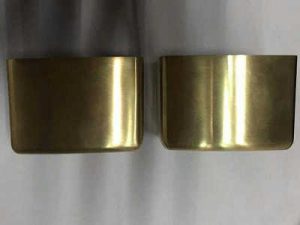The intro of die cast aluminum alloys goes back to 1914 when lightweight aluminum was invented for the very first time. Though die casting was established way back in the 1800s, yet just alloys of different make-ups of tin and also lead were used. Nevertheless, aluminum reinvented the whole principle of this outstanding process.
Aluminum is perfect for Die Casting:
The reason for the expanding appeal of aluminum in the die casting lightweight aluminum sector is for its lightweight and anti-corrosion properties. Apart from that, this steel has high dimensional stability for intricate shapes and slim wall surfaces. High thermal as well as electric conductivity, along with the ability to withstand heats have actually made lightweight aluminum die casting a much-preferred option these days.
Cold Chamber Machines and also Aluminum Die Casting:
Typically cool chamber equipment are made use of for die casting lightweight aluminum, aluminum featured high melting points. The process involves pouring liquefied steel right into a 'chilly chamber,' or cylindrical sleeve. This can be done either manually by a hand ladle or by an automated ladle. The next step entails securing the cool chamber port and also forcing the metal into the locked die at high pressures with the help of a hydraulically run bettor.

Automated equipment in Die Casting:
Die casting aluminum nowadays has improved a lot as well as manual procedures have rightly changed computerized quality control. Today there are several kinds of machines made use of in die casting approach, which can make your job easy, conserve your time and enhance your performance. While some die-casters use various devices to lube die, ladle metal right into chilly chamber devices others utilize them to incorporate other features like quenching and also cutting castings.
Even for readjusting Casting makers as well as ensuring stable castings there are microprocessors nowadays. You can obtain steel velocity, injection pole placement, hydraulic pressure and also various other data with these makers. Ultimately, all these assist in appropriate statistical evaluation in quality control.
Proper creating for high quality Die Casting:
Aside from using computerized makers, for obtaining the right Casting Aluminum items it is essential to have a terrific team of designers that take appropriate work together with casting specialists. This is an essential prerogative during the beginning of making to get a quality final product ultimately. This also assists in cutting down unnecessary expenses during the tooling and also the production phase in Lightweight aluminum Casting. Designing and also proper planning always results in proper execution, which consequently supplies products that are of top quality and also have a longer service life. This puts on Zinc Casting also.
These are the authorities to obtain the most effective casting aluminum items today.
We at GS Precision Mold provide the best die cast aluminum alloys at a very reasonable and affordable rate. To provide varieties for fulfilling customer’s needs we have high pressure die casting devices from 120 tonnes to 1650 Tonnes and Gravity spreading we can create component weight as much as 50 kg. We expect to fulfill your casting needs. For more information, visit our official website aludiecasting.com.


